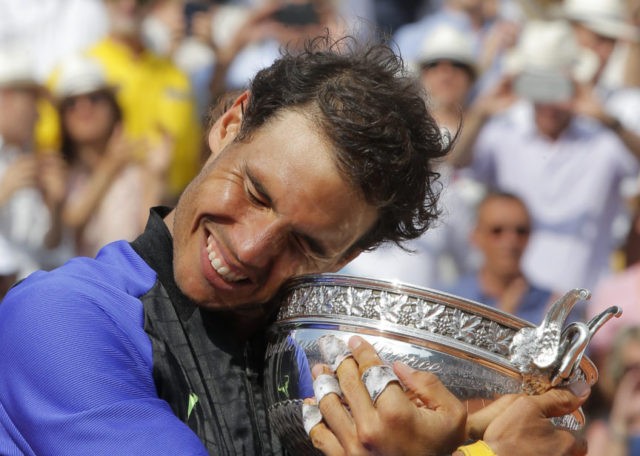PARIS—Bethanie Mattek-Sands and Lucie Safarova won the women’s doubles championship at the French Open on Sunday morning, making it three finals in a row for them at Paris’s Roland-Garros stadium. The U.S.-Czech team lifted the Suzanne Lenglen trophy in 2015 and was runner-up last year (the years were inadvertently reversed in a previous dispatch).
Mrs Mattek-Sands showcased her typical leaping volley slams and all-court presence. Miss Safarova complemented the No. 1-seeded team’s aggressive tactics with her powerful baseline game. The Australian duo of Casey Dellacqua and Ashleigh Barty did not pose a serious threat and went out in a few minutes over an hour, 6-2, 6-1.
Brethanie Mattek-Sands joins Ryan Harrison in securing American representation among the winners at the Internationaux de France. With their Australian Open win last January, Bethanie & Lucie are now two-up in the year’s Grand Slam circuit.
If the American-Czech team seemed at times in a different league from the error-prone Australians, the women’s doubles looked like a nail-biter compared to the day’s main event, the men’s final pitting nine-time champion Rafael Nadal against last year’s U.S. Open champion, Stan Wawrinka.
Excellent over the past two weeks, Wawrinka was expected to give the man of Majorca a serious run for his money, if not spoil his decima, or tenth trophy, at Roland-Garros. Having won his tenth Monte-Carlo and Barcelona tournaments earlier this season, Nadal, after two seasons of being on and off the disabled list, reasserted his claim as the king of tennis on clay surfaces.
Wawrinka never found the confidence and control that gave him an epic victory over world No. 1 Andy Murray in the semi-finals. More accurately, Nadal never let him find it. In total contrast to the great Scotsman’s defensive strategy, the Majorcan took the fight to his opponent immediately and never let up.
With his baseline power from either side, Wawrinka puts pressure on defensive players. Against Nadal, an all-court attacker who is also one of the best retrievers in the sport, Wawrinka’s deep, “heavy” strikes had no place to go – when the managed to get them going.
The basic hitting statistic tells the tale: Wawrinka hit only 19 winners to Nadal’s 27; and this only hints at the complete imbalance in the pace of the match, overwhelmingly determined by Rafa as he kept Stan off balance.
Nadal always was quicker and faster with a surprise cross-court winner, an impossible down-the-line missile, or a clutch drop-shot. The straight-set win in scarcely over two hours produced a score (6-2, 6-3, 6-1) that was, embarrassingly enough, a fair summary of what happened. Though he hit many of his signature ground-strokes, Wawrinka also found himself watching balls zip past or away from him before he could think of reaching them. Frustrated and dejected, he broke a racquet on his knee and, surprise, the rout continued.
The Nadal-Wawrinka match had at least once quality found also in the women’s final, played on Saturday. Though far more competitive, the three sets pitting Romania’s Simona Halep, the favorite, and the tournament Cinderella, an unknown teen from Latvia (she turned 20 the day she beat Timea Bacsinsky in the semi-finals) likewise demonstrated that energetic offense in tennis beats a befuddled defense any time.
The difference was that the ebullient Jelena Ostapenko played with only one tactic: hit everything as hard as you can and aim for the lines. When you fail, try again: she hit 54 winner to 54 unforced errors. And, like the Rafa Express, it worked.
Miss Ostapenko, who grew up wanting to play like Serena Williams, said it simply: “I like to hit hard.”
She may do it for a few more years: Rafa Nadal won his first French Open in 2005 at 19, and at 31, with this 15th Slam, he does not look ready to stop.

COMMENTS
Please let us know if you're having issues with commenting.